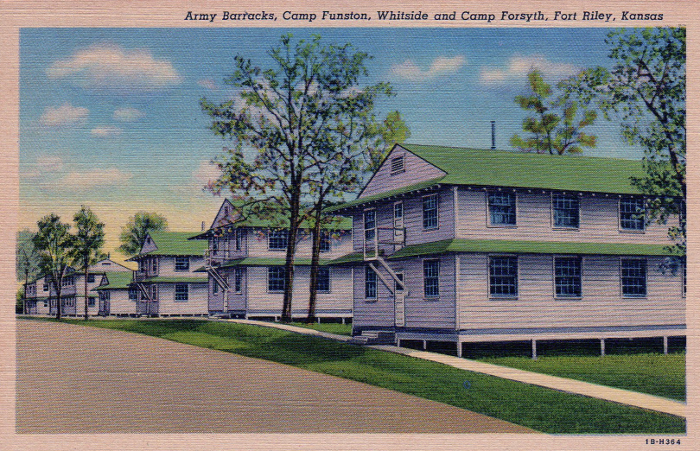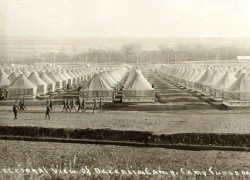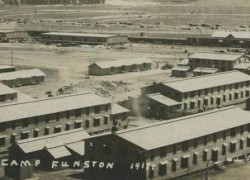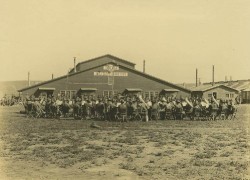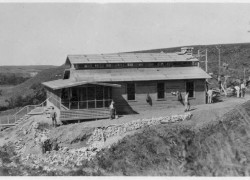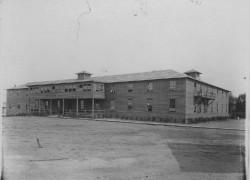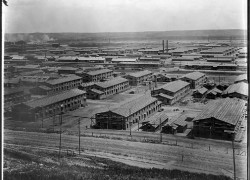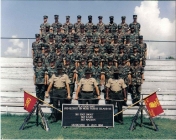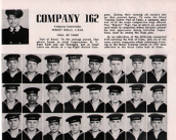Camp Funston, the fourteenth of sixteen Divisional Cantonment Training Camps established at the outbreak of World War I, is located on Fort Riley, and is located southwest of Manhattan, Kansas. The camp was named for Brigadier General Frederick Funston. Construction began during the summer of 1917 and eventually encompassed approximately 1,400 buildings on 2,000 acres. During World War I, nearly 50,000 recruits trained at the camp, commanded by Major General Leonard Wood.
In October 1917, the War Department authorized the construction of an amusement zone at Camp Funston, Kansas. A new department, called the Department of Camp Activities and Amusements, was organised for the purpose of preparing plans for the proposed zone and superintending its construction. A plot of ground, 1092 feet long and 150 feet wide, near the center of the camp, was alloted for the Zone by the Camp Commander. This ground was divided up into four blocks, each 243 feet by 150 feet, separated by three fourty foot streets. 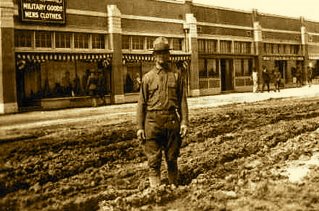
According to the War Department provisions, the "Zone" had to be built "by civilian capital", so it was necessary to run it on the concession plan and to design the various buildings according to the needs of the concessionaires. The primary concessions were to be three theatres, each to have a capacity of 2,000 people, a large pool hall, barber shop, several restaurants, clothing stores and an arcade to contain about fifty small booths. Each of the concessionaires paid a percentage of their gross income back to the Camp Exchange.
Camp Funston also had it's own fire department, police force, and hospitals.
During World War I, Camp Funston also served as a detention camp for conscientious objectors.
In March 1918, the first recorded case of the epidemic "Spanish Flu", was reported at Camp Funston. In March and April, Camp Funston, Kansas, experienced three waves of influenza. The first two affected all types of personnel, and the third, which occurred late in April, was predominantly in recruits who arrived shortly after the second wave. The epidemic got worse. Then, as abruptly as it came, it disappeared.
Images:
